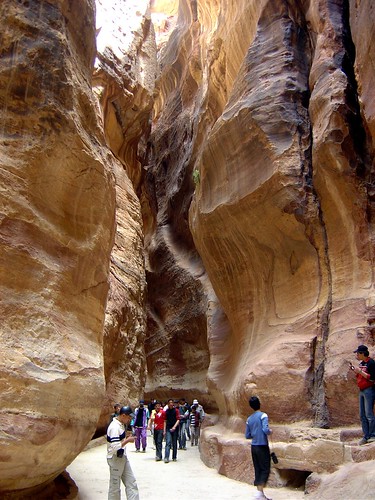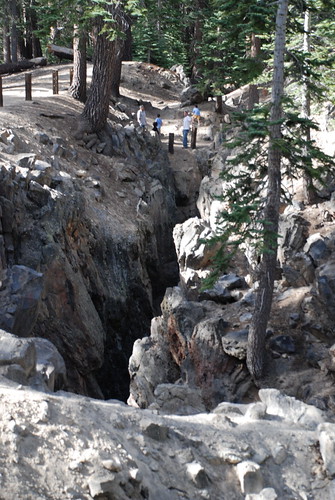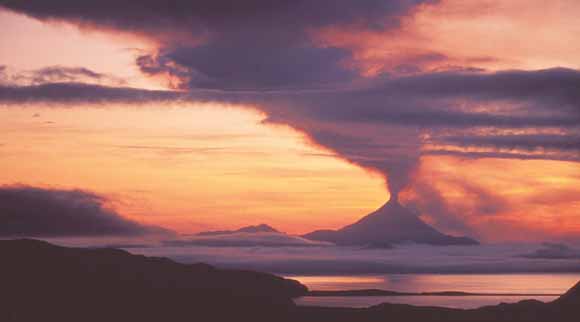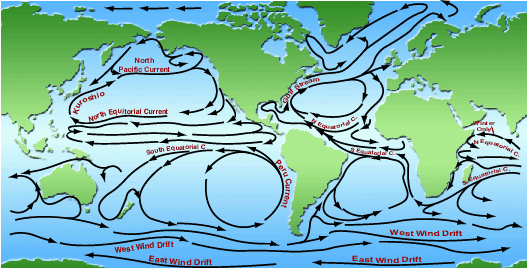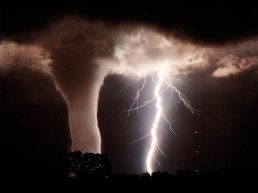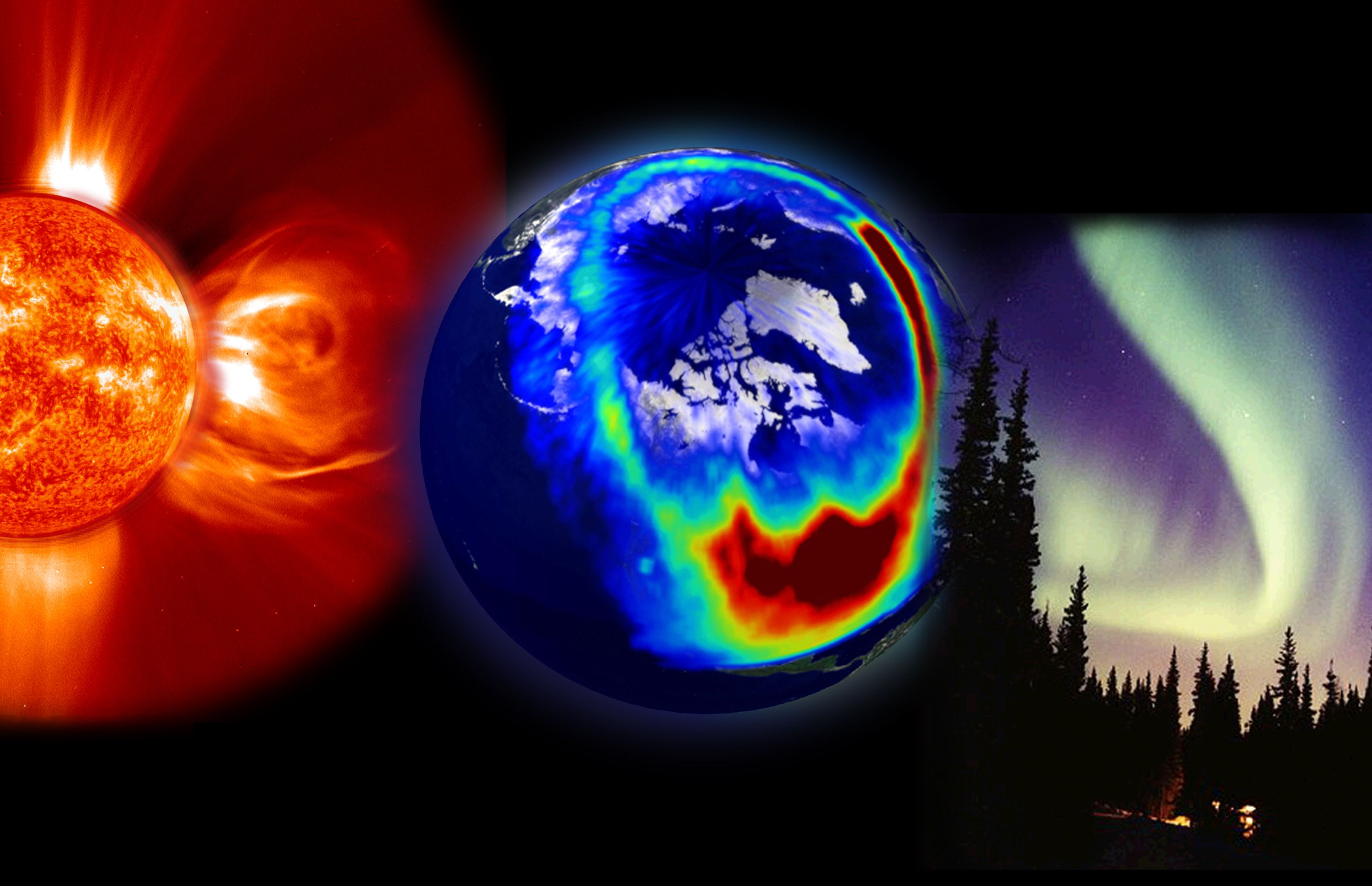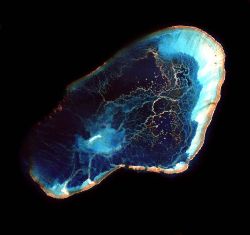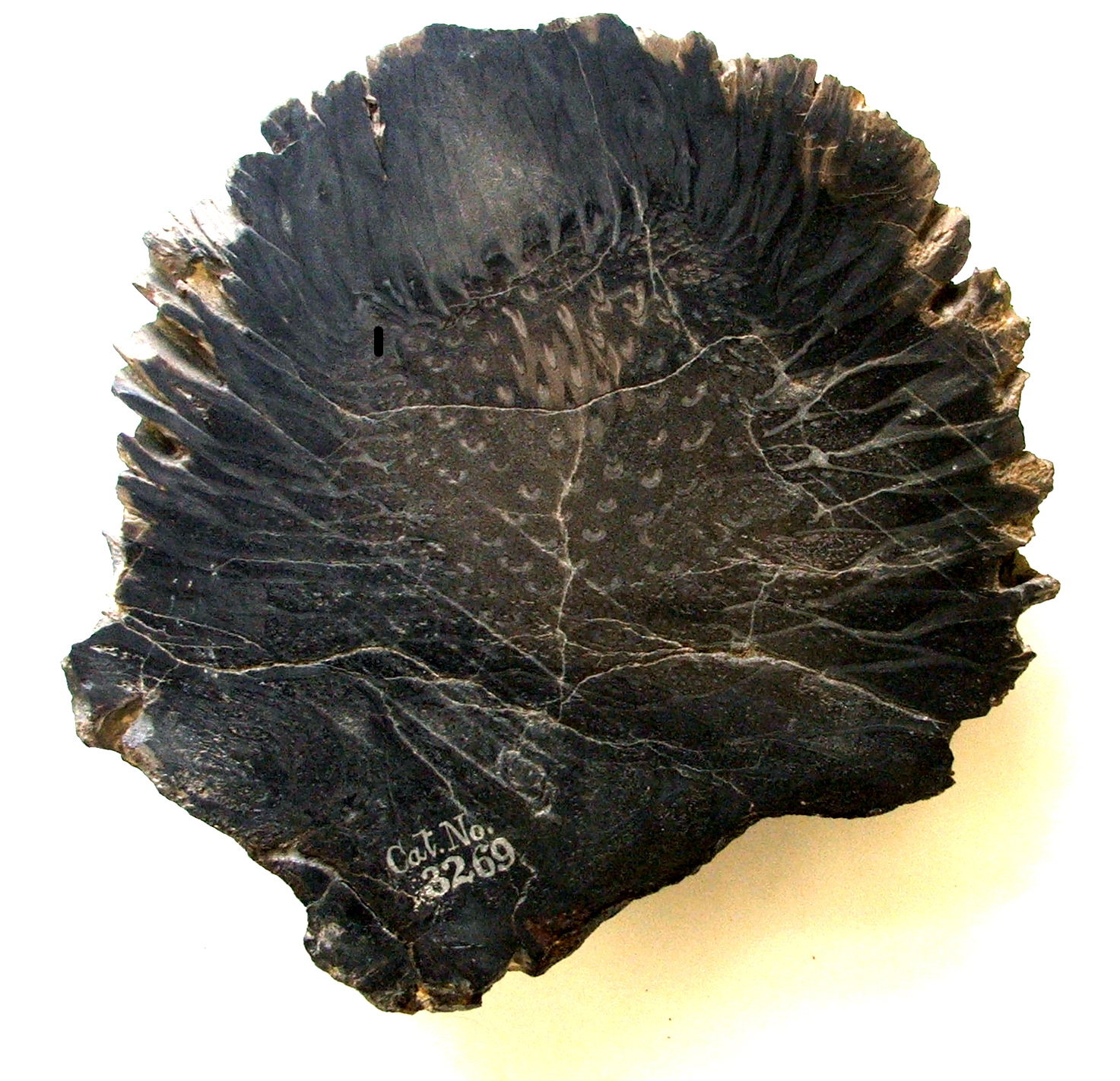Great Moments in DNA
Nothing proves that size doesn’t matter like DNA. That tiny little molecule nested deep within our cells proves useful in an incredible variety of ways. It’s the architect of life, coding for proteins that create everything from bacteria to great blue whales. With it, we can trace the origin and unfolding of life over billions of years. It exonerates the innocent and convicts the guilty. It opens up vast new possibilities in medicine, allowing us the hope of curing the previously incurable. It could lead to unbelievably powerful new computers. And it provides a nifty scaffold for nanotechnology, which will revolutionize the gadgets that improve our lives.
We’ve come a long way from Gregor Mendel and his peas. Join me in a journey through some of DNA’s greatest moments, and let’s raise a glass to the stuff of life.
1869 – DNA first isolated
In the winter of 1868/9 the young Swiss doctor Friedrich Miescher, working in the laboratory of Felix Hoppe-Seyler at the University of Tübingen, performed experiments on the chemical composition of leukocytes that lead to the discovery of DNA. In his experiments, Miescher noticed a precipitate of an unknown substance, which he characterised further. Its properties during the isolation procedure and its resistance to protease digestion indicated that the novel substance was not a protein or lipid. Analyses of its elementary composition revealed that, unlike proteins, it contained large amounts of phosphorous and, as Miescher confirmed later, lacked sulphur. Miescher recognised that he had discovered a novel molecule. Since he had isolated it from the cells’ nuclei he named it nuclein, a name preserved in today’s designation deoxyribonucleic acid.
1952 – A blender and a centrifuge prove DNA the stuff of genetics
The Hershey-Chase experiments were a series of experiments conducted in 1952 by Alfred Hershey and Martha Chase, confirming that DNA was the genetic material, which had first been demonstrated by Oswald Avery in 1944. While DNA had been well known to biologists since 1869, most assumed at the time that proteins carried the information for inheritance. Hershey and Chase conducted their experiments on the T2 phage, a virus whose structure had recently been shown by electron microscopy. The phage consists only of a protein shell containing its genetic material. The phage infects a bacterium by attaching to its outer membrane and injecting its genetic material, causing the bacterium’s genetic machinery to produce more viruses, leaving its empty shell attached to the bacterium. [snip]
In a second experiment, they labelled the phages with radioactive Sulfur-35 (Sulfur is present in the amino acids Cysteine and Methionine, but not in DNA). After separation, the radioactive tracer then was found in the protein shells, but not in the infected bacteria, confirming that the genetic material which infects the bacteria is DNA.
1953 – Photo 51 leads to discovery of the double helix
Research undertaken by Maurice Wilkins, with support from Rosalind Franklin, led to the discovery of the DNA molecule structure. This discovery, by American geneticist James Watson and British biophysicist Francis Crick in 1953, revolutionised biology and medicine. [snip] Crick and Watson’s announcement of a structure for DNA and how it is made of nucleic acid suggested how it might replicate, mutate, and be expressed. They proposed that the DNA molecule takes the shape of a double helix, an elegantly simple structure that resembles a gently-twisted ladder. The rails of the ladder are made of alternating units of phosphate and the sugar deoxyribose; the rungs are each composed of a pair of nitrogen-containing nucleotides.
1966 – Biochemical analysis breaks the genetic code
In 1966 the genetic code was finally “cracked”. Marshall Nirenberg, Heinrich Mathaei and Severo Ochoa demonstrated that a sequence of three nucleotide bases, a codon, determines each of the 20 amino acids. This means that there are 64 combinations possible for 20 amino acids. The formed synthetic mRNA by mixing the nucleotides of RNA with a special enzyme called polynucleotide phosphorylase. This resulted in the formation of a single-stranded RNA in this reaction. The question was how this genetic code, built up out of four different nucleotides, could code for the twenty different amino acids, which were found in nature. Nirenberg and Matthaei synthesized poly(U) by reacting only uracil nucleotides with the RNA synthesizing enzyme, producing -UUUU-. They mixed this poly(U) with the protein synthesizing machinery of E. Coli in vitro and observed the formation of a protein. This protein turned out to be a polypeptide of phenylalanine. So, they showed a triplet of uracil must code for phenylalanine.
1970 – First restriction enzyme isolated
In a series of landmark papers, beginning in 1970, Hamilton Smith, a molecular biologist at Johns Hopkins University School of Medicine, outlined the results of work with Haemophilus influenzae Rd and phage P22, which naturally infects Salmonella bacteria. In 1972, he purified the first site-specific “Type II” restriction enzyme, known as Hind II. The crucial discovery came by chance: Incubating bacteria and phage together, Smith happened to notice that the phage DNA degraded over time. He and his colleagues were successful in purifying the enzyme at work, and went on to identify the short sequence of 6 base pairs in phage P22 that Hind II recognized and cut apart—always at the same location, in exactly the same way.
1983 – Polymerase Chain Reaction kicks sample size to the curb
At the time he developed PCR in 1983, Mullis was working in Emeryville, California for Cetus Corporation, one of the first biotechnology companies. There, he was responsible for synthesizing short chains of DNA. Mullis has written that he conceived of PCR while cruising along the Pacific Coast Highway one night in his car.[38] He was playing in his mind with a new way of analyzing changes (mutations) in DNA when he realized that he had instead invented a method of amplifying any DNA region through repeated cycles of duplication driven by DNA polymerase. In Scientific American, Mullis summarized the procedure: “Beginning with a single molecule of the genetic material DNA, the PCR can generate 100 billion similar molecules in an afternoon. The reaction is easy to execute. It requires no more than a test tube, a few simple reagents, and a source of heat.”[39] He was awarded the Nobel Prize in Chemistry in 1993 for his invention,[4] seven years after he and his colleagues at Cetus first put his proposal to practice.
1984 – DNA becomes a powerful foresnics tool
DNA fingerprinting has become an indelible part of society, helping to prove innocence or guilt in criminal cases, resolving immigration arguments and clarifying paternity. Its inventor, Professor Sir Alec Jeffreys, University of Leicester, looks back at how it began. [snip] “The true story of DNA fingerprinting starts at the headquarters of the British Antarctic Survey in Cambridge,” says Professor Jeffreys. “I collected a big lump of seal meat from their lock-up freezer and, to cut a long story short, we got the seal myoglobin gene, had a look at human myoglobin gene and there, inside an intron in that gene was tandem repeat DNA – a minisatellite.”
1987 – Mitochondrial DNA draws human family tree
Scanning broadly has produced global migratory maps of unprecedented resolution, some of which have been published only during recent months. The research provides an endorsement of modern human origins in Africa and shows how that continent served as a reservoir of genetic diversity that trickled out to the rest of the world. A genetic family tree that begins with the San people of Africa at its root ends with South American Indians and Pacific Islanders on its youngest-growing branches. [snip] …Rebecca L. Cann and Allan C. Wilson of the University of California, Berkeley, published a groundbreaking paper based on analyzing the DNA of mitochondria, the cell’s energy-producing organelles, which are passed down through the maternal line. They reported that humans from different populations all descended from a single female in Africa who lived about 200,000 years ago—a finding that immediately made headlines trumpeting the discovery of the “Mitochondrial Eve.”
1988 – Colin Pitchfork becomes first murderer convicted by DNA evidence; DNA frees its first wrongfully-convicted man
Colin Pitchfork (born 1961, Bristol, England) was the first criminal convicted for murder based on DNA fingerprinting evidence and the first to be caught as a result of mass screening. Pitchfork raped and murdered two girls in Narborough, Leicestershire, on November 21, 1983, and on July 31, 1986. He was arrested on September 19, 1987, and sentenced to life imprisonment on January 23, 1988 after admitting both murders.
[Timothy] Spencer was arrested by Arlington police and charged with the murder of Susan Tucker, his most recent victim. DNA evidence later connected him to the murders of Davis and Hellams[1]. He was also convicted in the Cho murder though DNA evidence wasn’t used at trial. DNA evidence also tied him to the 1984 murder of Carol Hamm, a crime which David Vasquez had been convicted of. Vasquez was eventually acquitted after having served five years of a thirty-five year prison sentence and was the first American to be exonerated based on DNA evidence.
(Photo credit: Lee Lofland at The Graveyard Shift)
1990 – 2003 Human Genome Project
The publication of the detailed structure of 99 percent of the human genome on April 14 is the culmination of one of the largest scientific undertakings in history. Initiated in 1990, the Human Genome Project (HGP) involved the cooperative work of hundreds of scientists in 20 sequencing centres in countries including China, France, Germany, Great Britain, Japan and the United States. The achievement is significant. Not only has it given a glimpse into the extraordinary complexity of the structure of human DNA but it has also demonstrated the huge potential of cooperative scientific endeavour organised on an international basis. The HGP was finished two and a half years ahead of schedule with all goals completed and for considerably less than the estimated budget. [snip]
US National Human Genome Research Institute (NHGRI) director Francis Collins, who led the project, summed up its significance on April 14, by declaring: “The HGP has been an amazing adventure into ourselves, to understand our own DNA instruction book, the shared inheritance of all humankind.”
2007 – DNA-Based MS Vaccine Undergoes Successful Trial
The first human trial of a DNA-based vaccine to combat multiple sclerosis has been declared a success by doctors in America after tests on patients revealed signs that their condition had improved. However, the trial is only the first small step in developing an effective treatment against the debilitating degenerative disease, which affects about 85,000 people in the UK.
The vaccine works by dampening down the immune system, which is believed to become overactive in people who develop multiple sclerosis.
The disease is caused by a small group of immune cells that start to attack the body by targeting the fatty sheaths of myelin that coat nerves in the central nervous system. After waves of attacks, the nerves are eventually destroyed. The myelin coating helps to ensure that signals passed along the nerves travel quickly.
Doctors led by Amit Bar-Or at the Montreal Neurological Institute in Canada developed a vaccine which contains the strands of DNA that produce myelin.
2007 – Oldest Known DNA Reveals Secrets of Greenland
Picture this: sweeping conifer forests, with pine, alder, spruce and yew trees, crawling with beetles, flies and spiders, and with butterflies fluttering through the sun-dappled branches. It does not sound like a description of Greenland, but scientists say this is what the island looked like half a million years ago. They were able to paint the picture by extracting what is probably the oldest-known DNA from the ice at the base of the Greenland ice sheet.
A Danish-led team, including the Australian researcher Michael Bunce, extracted the ancient DNA from the muddy bottoms of cores drilled deep into the ice cap in southern Greenland. The researchers identified genetic traces of a surprising variety of tree species, including spruce, pine and yew. The team believes the DNA is between 450,000 and 800,000 years old, based on their analysis of insect genetic material.
2008 – Oldest human DNA isolated
DNA from dried human excrement recovered from Oregon’s Paisley Caves is the oldest found yet in the New World — dating to 14,300 years ago, some 1,200 years before Clovis culture — and provides apparent genetic ties to Siberia or Asia, according to an international team of 13 scientists.
[snip]
“Had the human coprolites at the Paisley Caves not been analyzed for DNA and subjected to rigorous dating methodology,” he added, “the pre-Clovis age of the artifacts recovered with the megafaunal remains could not have been conclusively proven. In other words, the pre-Clovis-aged component of this site could very well have been missed or dismissed by archaeologists.”


